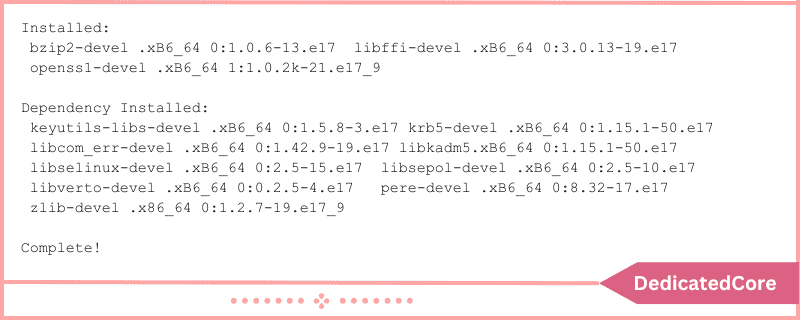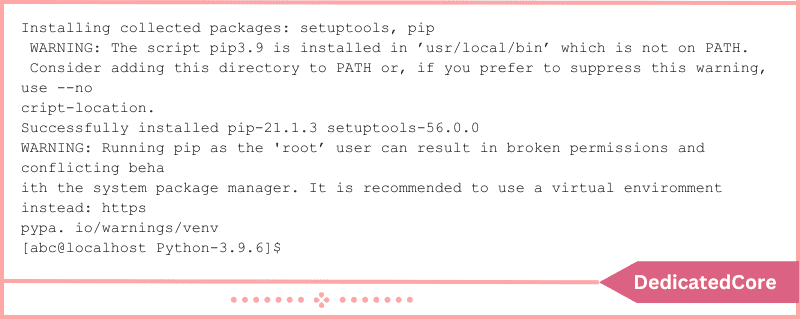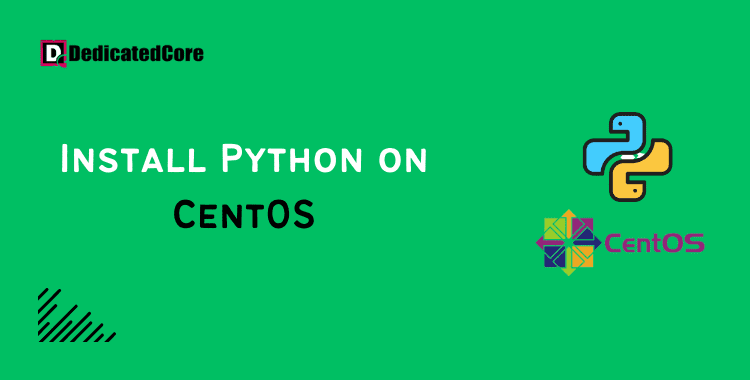Python is a well-liked and potent programming language that is utilized in a variety of applications. This article will show you how to install the most recent version of Python 3 if your operating system is CentOS 7. You may guarantee that you have access to the most recent features and improvements by installing the most recent Python 3 version.
Python is a well-liked, reliable, and efficient programming language. It is utilized by numerous Linux distributions, notably CentOS 7. You must manually put it up on CentOS 7 because it is not preloaded. Depending on the version you want, this guide walks you through two alternatives for installing Python 3 on CentOS 7. For those beginning their Python journey on Ubuntu. This complete tutorial on setting up your development environment offers step-by-step instructions. It ensures you can get Python up and running smoothly.
Ways to Install the Latest Version Of Python on CentOS
Method 1: Python Installation via Package Manager
Method 2: Python Installation From Source Code
Method 1: Python Installation via Package Manager
Python 3.6.8 is the most recent Python 3 version accessible through package management. Installing the package from the source code is necessary for the most recent major release. For information on how to do this, go to the section that follows. The procedures indicated below should be followed if you prefer to install version 3.6.8.
Step 1: Update the Repository First
sudo yum update -y
Step 2: Checking if Python 3 is already installed in the Package Repository
Before continuing with the installation on your CentOS system. You can move on to the following step if your CentOS installation is 7.7 or newer. You must add IUS, a yum repository that offers more recent software versions and contains Python 3 if you are using a CentOS version older than 7.7.
Use the following command to include the IUS repository:
sudo yum install https://repo.ius.io/ius-release-el$(rpm -E '%{rhel}').rpm
Hold off until the installation is finished. Update the repository after that:
sudo yum update -y
Step 3: Run the following Command in the Terminal Window to Install Python 3
sudo yum install -y python3
Hold off until the installation is finished. It should be clear from the output that Python 3 and all necessary dependencies have been installed.

Step 4: Checking if Python 3 has been Installed properly using Command
python3 --version
You should now be able to access Python 3 on your CentOS machine.

Method 2: Python Installation From Source Code
At the time of writing, Python 3.9.6 is the most recent major version. To install it, you must download the source code and follow a few additional setup instructions.
Step 1. Install the Necessary Packages and Dependencies First
sudo yum groupinstall "Development Tools" -y
sudo yum install gcc open-ssl-devel bzip2-devel libffi-devel -y

Step 2: Download the specified Python version
Using the wget command. Run the command: to install wget if you don’t already have it.
sudo yum install wget -y
Use the following command to download Python 3.9.6:
wget https://www.python.org/ftp/python/3.9.6/Python-3.9.6.tgz

Step 3: Take the Package Out
sudo tar xzf Python-3.9.6.tgz
Step 4: The Directory after the Package is Out
cd Python 3.9.6
Step 5: With the Commands below Compile Source Code
Compile the source code into an Installation package using the next two commands once you’re in the Python directory:
./configure --enable-optimizations
make altinstall
The installation package is created using the make program. The system is told to build a second installation of this version of Python by the altinstall command. Without it, the system would use Python instead of the default version.

Step 6: To Ensure the Installation, Check the Python Version
python3.9
The system will display as below :

Final Words on Installing the Latest Version of Python on CentOS
You may easily install Python 3 on your CentOS 7 PC by following these instructions. Now that Python has updated its features and improvements, you can construct your apps quickly. This manual included two methods for installing Python 3 on CentOS 7. See our post on installing Python on CentOS 8 for the more recent version of CentOS. For those diving deeper into Python for data analysis, understanding how to calculate averages is essential. To bypass the loop through the list, go for finding an average of the list in Python which is time-saving & also effort-saving so this will help in tricky operations.
Once everything is ready, you may begin writing some basic Python scripts to learn how to acquire the time and date or to learn how to handle files using built-in utilities for opening, closing, and creating files in Python. Hope you will get a crystal clear idea about the procedure.
Frequently Asked Questions (FAQ)
1. Why should I Upgrade to the Latest Version of Python on CentOS?
Upgrading to the latest version of Python on Centos is important because it gives access to the newest features. It helps in system strength and improving security patches that improve the performance.

